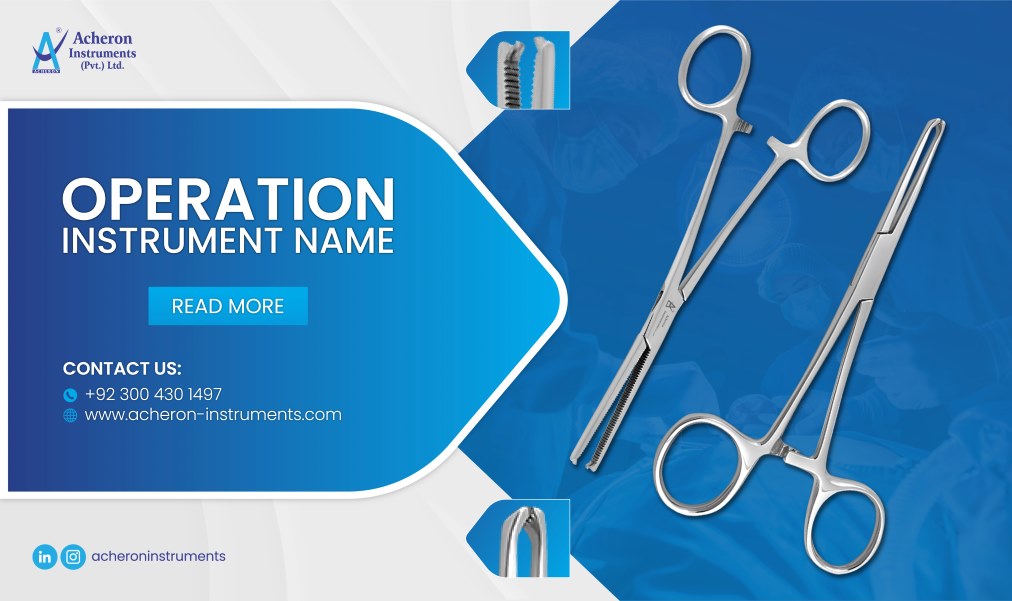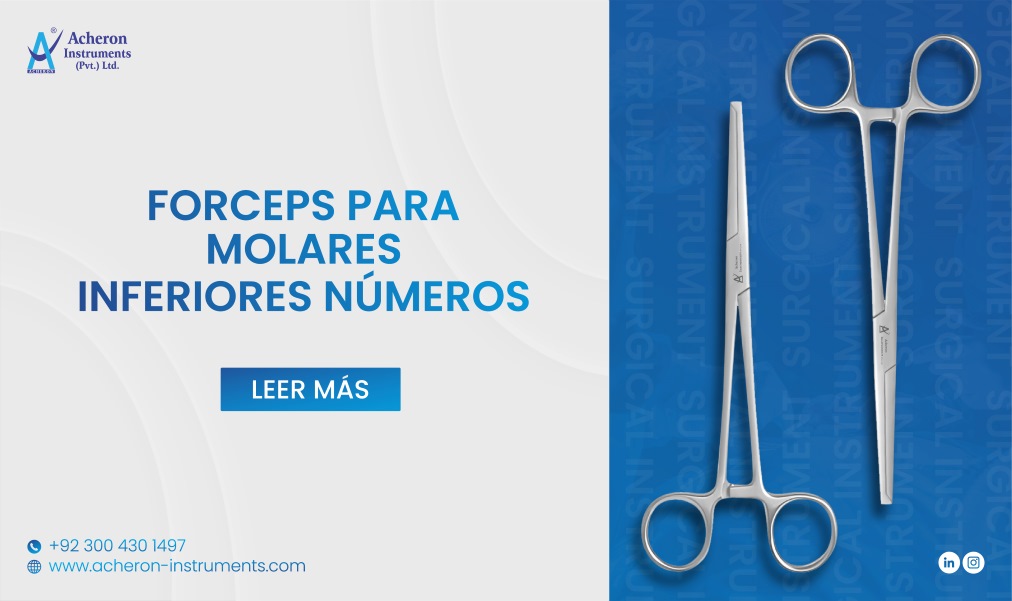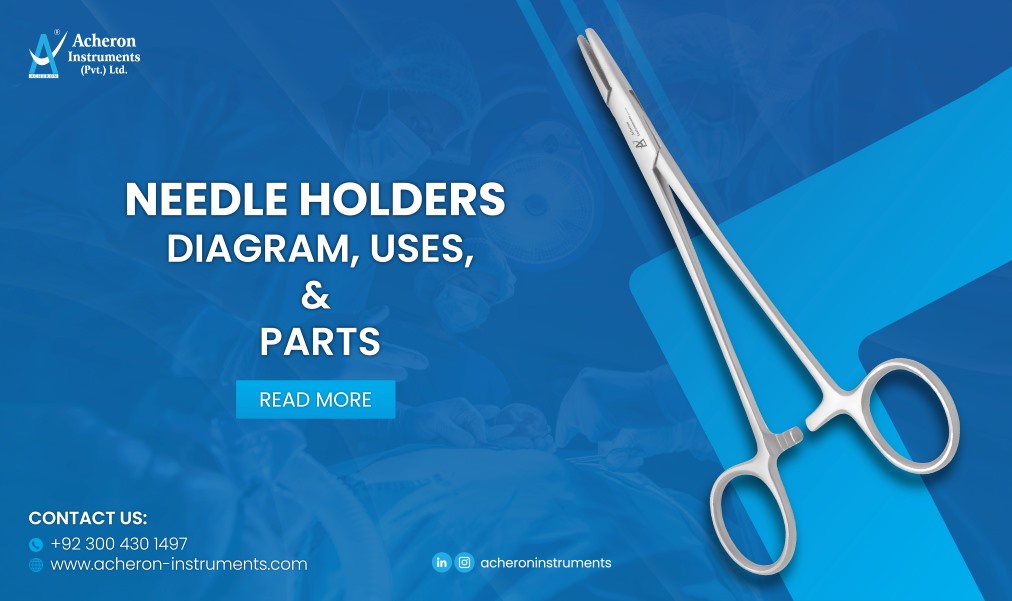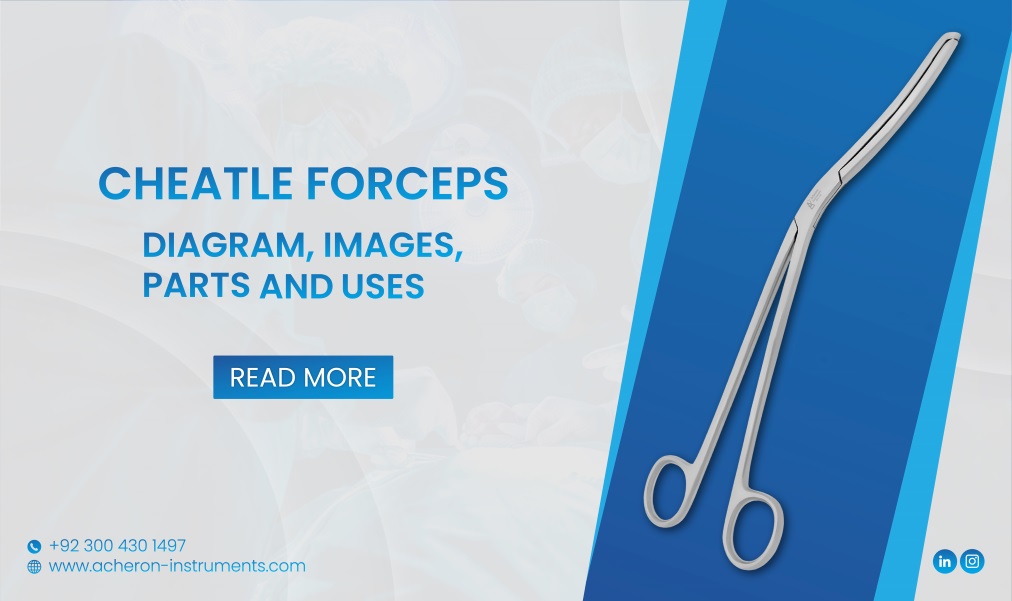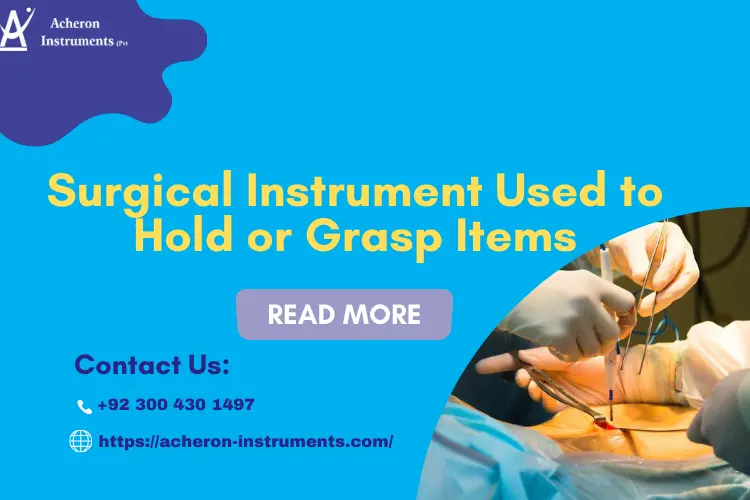 Want to know the Surgical Instrument Used to Hold or Grasp Items? One of the most challenging tasks surgeons have to go through during their surgical practice is to grasp and hold items, objects, blood vessels, tissues skin, etc. Whether you being a surgeon have to clamp blood vessels for maintaining hemostasis or want to have a better exposure to the surgical site by lifting or moving the tissues, you are going to need specialized surgical tools. The surgical instruments used to hold or grasp items are fundamental equipment as they allow them to perform controlled and precise movements contributing to the overall safety and effectiveness of the surgery.
Want to know the Surgical Instrument Used to Hold or Grasp Items? One of the most challenging tasks surgeons have to go through during their surgical practice is to grasp and hold items, objects, blood vessels, tissues skin, etc. Whether you being a surgeon have to clamp blood vessels for maintaining hemostasis or want to have a better exposure to the surgical site by lifting or moving the tissues, you are going to need specialized surgical tools. The surgical instruments used to hold or grasp items are fundamental equipment as they allow them to perform controlled and precise movements contributing to the overall safety and effectiveness of the surgery.
These surgical instruments are also crucial for dental practices such as teeth removal and impacted tooth extraction. Such surgical equipment comes into use when dentists have to manipulate soft tissues for better visibility, implant placements, and control of bleeding during dental procedures.
In this blog, we will be discussing surgical instruments used to hold or grasp items and their specific uses in the healthcare department.
Here are some Surgical Instrument Used to Hold or Grasp Items
Forceps
Oftentimes, surgeons have to grasp small objects that are too small to be held by hands. At this point, forceps come in handy. These incredible handheld tools are useful when surgeons have to hold small objects and also assist surgeons when they have to hold so many objects at a single time. Moreover, there is a vast range of surgical forceps that are useful for grasping various types of objects and have unique designs and characteristics for a specific purpose. Let’s talk about a few of them:
Thumb Tissue forceps:
These forceps are extremely useful for holding and manipulating tissues in various surgical procedures. Also, these are the most common ones used in surgical practices due to their ideal tweezer-like design that makes manipulation of tissues easier. Moreover, they feature a non-ratchet mechanism, and surgeons have to use them by squeezing the handles to open and close them. This makes these tools ideal for precise control in delicate procedures.
Additionally, these forceps feature serrated tips that grip the tissues securely without causing damage. Also, these serrations help prevent slippage while performing surgeries. Some common examples of tissue forceps include Adson forceps, DeBakey forceps, and Brown-Adson forceps.
Hemostatic forceps
Excessive bleeding can be very fatal during surgeries that need to be controlled. Hemostatic forceps are greatly useful when surgeons have to clamp blood vessels to control bleeding and maintain hemostasis. Also, these forceps generally come with a locking mechanism to self-lock the jaws at the desired place. Moreover, this incredible feature surgeons to focus on other aspects of the procedure without continuously holding the forceps.
The tips of the hemostat surgical instrument are often designed with serrations or grooves to enhance their grip on blood vessels. Additionally, there are multiple variations available for hemostatic forceps that come in different sizes, designs, and patterns to suit different surgical applications. Some common examples include Kelly forceps, Rochester Carmalt forceps, Kocher forceps, and mosquito forceps.
Allis tissues:
These forceps come into use when surgeons have to grasp thick or tough tissues, especially during intestinal surgeries. They feature finger ring handles with a ratchet locking mechanism and serrations on the tips for a secure grasp on sensitive tissues. Also, surgeons use this tool for grasping tendons and fascia such as bowel and breast tissues.
Additionally, some variations of these forceps also come with multiple interlocking tooth configurations that are generally atraumatic in nature.
Babcock forceps
These amazing forceps are widely used in intestinal and laparotomy procedures for their enormous surgical benefits. These forceps feature a finger ring design with a ratchet mechanism that can grasp delicate tissues and are similar in design to Allis forceps. However, these forceps are less traumatic with their wider and round grasping surface.
These handy instruments have a long and fascinating history. Archaeological evidence suggests their use as early as 3000 BC in ancient Egypt! Over time, their design and materials evolved, with advancements like serrated edges and locking mechanisms further refining their utility
Needle holders
Needle holders are greatly useful when surgeons have to hold needles for suturing purposes. These tools ensure accurate and secure stitching in surgeries requiring sutures. They feature a distinctive design with a ratchet mechanism to hold the suture needle in place firmly.
Olsen-Hegar needle holders and Mayo-Hegar are two prevalent types, with the former incorporating scissors, allowing for a dual-functionality that simplifies the suturing process. Additionally, the jaws of needle holders vary in size and shape which in turn accommodates different needle types and sizes. Apart from this, this diversity ensures that surgeons can select the most suitable instrument for a specific procedure. Thereby, optimizing precision and efficiency.
Retractors
While forceps and graspers secure a grip on the tissues, retractors are instruments designed to hold tissues or organs away from the surgical site, providing a clear view and access for the surgeon. There are two types of surgical retractors available for this purpose:
Self-retaining retractor
These retractors assist surgeons in lengthy procedures as they comprise an adjustable locking mechanism. Such retractors do not require constant manual assistance to maintain their position. Examples of these retractors include Balfour.Beckman, Gelpi, and Weitlaner retractors.
Hand-held retractors
These retractors require an assistant to hold them in place, allowing the surgeon to work within the exposed area. Common examples of hand-held retractors include Deaver and Richardson retractors. Although surgeons have to hold these retractors throughout the surgical procedures, such retractors come in handy when surgeons have to retract and hold organs and skin in surface procedures. Also, these retractors are useful when surgeons have to retract the incisions for accessing deep surgical areas.
The choice of retractor depends on the specific anatomical structures involved and the nature of the surgery.
Conclusion
From forceps to hemostats, retractors to needle holders, each instrument serves a unique purpose. This in turn contributes to the success and safety of surgical procedures. Such surgical tools are also an integral part of orthodontic surgical practices including extraction of teeth from a tooth socket and dental implant procedures.
However, surgeons have to choose instruments based on the type of tissue being manipulated and the overall goals of the procedure. This in turn will enable them to perform a wide range of procedures with precision, control, and minimal invasiveness, ultimately contributing to better patient outcomes.
Buy the best surgical instrument used to hold or grasp items
If you are in search of the best quality surgical instrument used to hold or grasp items during medical practices, we’ve got you covered with our exceptional range of surgical tools. Acheron Instruments is proudly the top-notch supplier of surgical instruments across the globe. Our surgical instruments are known for their best performance, higher durability, and reliability in the long run.
Also, we offer high-grade German stainless steel forged surgical instruments that are ISO-certified. Thus, ensuring the highest precision and accuracy in your surgical procedures. Not only this, our instruments are available at the best reasonable prices that will save you from constant repairs or replacements due to their highest quality material that will last for years and years.
Contact us for further assistance. Place your orders now!


